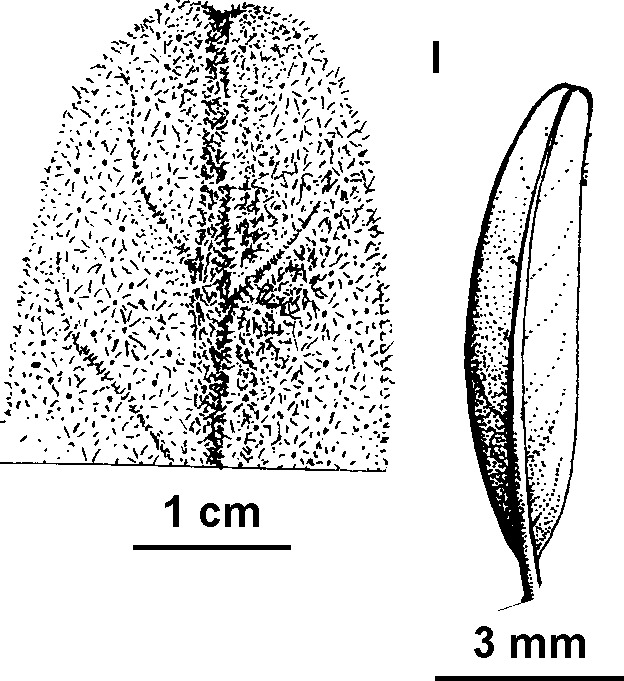Pomaderris oblongifolia
N.G.WalshSlender shrub 1–2.5 m high; young stems densely stellate-pubescent. Leaf blades oblong to narrow-ovate, 20–60 mm long, 6–15 mm wide, obtuse to shallowly emarginate, glabrous or minutely hispid above, lower surface greyish or rusty stellate-pubescent, secondary veins obscure; stipules 3–5 mm long, deciduous. Inflorescences narrow-pyramidal, terminal and/or axillary, 1–5 cm long; bracts deciduous. Flowers greenish to deep maroon, externally greyish or rusty stellate-pubescent; pedicels 1–3.5 mm long; hypanthium 1–1.2 mm long; sepals 1.2–1.7 mm long, persistent; disc absent; ovary virtually inferior, summit stellate-pubescent, style branched from near base. Operculum membranous, subequal to mericarp. Flowers Nov.–Jan.
EGU, HSF, MonT, VAlp. Endemic to the gorge tract of the Snowy River, from near McKillops Bridge downstream to near Buchan, also at Little River Gorge. Grows in coarse sand, usually amongst river rocks, and on lower slopes of clifflines.
Plants formerly suspected of being hybrids between P. aspera and P. oblongifolia from near the confluence of the Buchan and Snowy Rivers have since been named P. buchanensis.
Walsh, N.G. (1999). Pomaderris. In: Walsh, N.G.; Entwisle, T.J., Flora of Victoria Vol. 4, Cornaceae to Asteraceae, pp. 85–109. Inkata Press, Melbourne.
 Spinning
Spinning
